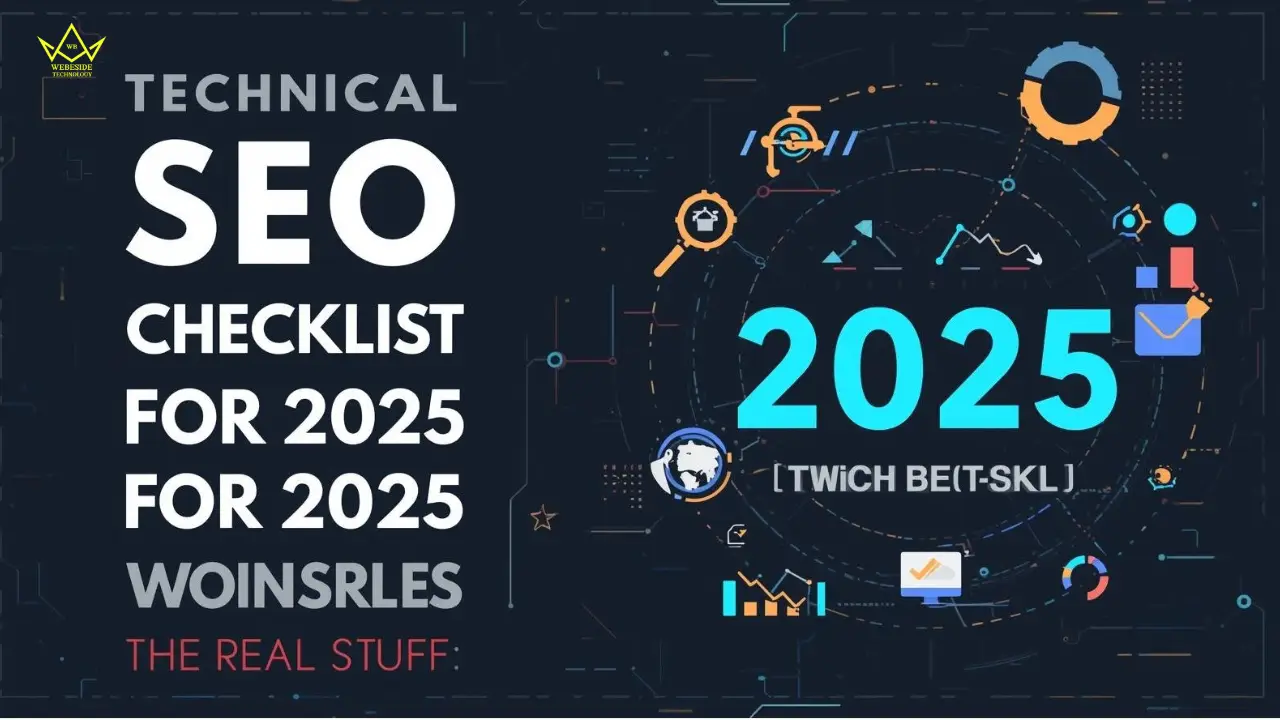Technical SEO Checklist for 2025 Websites: The Real Stuff
let’s just be honest here. Technical SEO isn’t glamorous. You won’t see it in sliders, banners, or flashy animations. But in 2025, if your website isn’t technically solid… uh, honestly, nothing else really works. I mean, you can have amazing content, tons of backlinks, all the fancy stuff—but if your site loads slowly or breaks on mobile, Google just ignores it. Like… poof. Gone. Seriously.
I’ve seen this happen way too many times. One client had this amazing blog, full of guides, tips, everything. But their mobile version? Total disaster. Traffic barely moved for months. So… we fixed the mobile layout, sped things up a bit, cleaned some errors… and boom—the site started climbing rankings. Not magic. Just basics done right. You know what I mean?
Webeside Technology (WB Tech) totally gets this. They make sure your website’s technical stuff is solid so everything else actually works.
Why Technical SEO Still Matters
Some people think technical SEO is old news. Honestly? Wrong. Google is smarter now. In 2025, it really looks at stuff like:
- Page speed – slow sites lose visitors. Seriously, people leave if it takes more than a few seconds.
- Mobile experience – most users are on phones.
- HTTPS – secure sites are trusted more.
- Indexing – Google has to find all your pages.
Ignore these, and your content—even if it’s amazing—is basically invisible. I’ve seen brilliant blogs get almost zero traffic because the technical side was broken. Fix it, and suddenly everything clicks.
Your 2025 Technical SEO Checklist
Alright, here’s a human-friendly checklist. No jargon. No fluff. Just stuff that actually matters.
1. Mobile-First
Your site has to work on phones. Period. Make sure:
- Layout adapts to all screen sizes.
- Buttons are clickable and spaced properly.
- Fonts are readable.
- Pages load fast—2–3 seconds max.
Even tiny tweaks here make a huge difference. Honestly… it’s crazy how many sites mess this up. Uh… yeah.
2. Speed
Nobody waits for slow pages. Google doesn’t like them either. Focus on:
- Compressing images.
- Minifying CSS, JS, HTML.
- Enabling caching.
- Avoiding scripts that block loading.
I had a client reduce load time by just two seconds—traffic jumped 15% in a month. Yeah… two seconds. Speed really matters.
3. HTTPS
Still on HTTP? Fix it. SSL certificates are cheap. Users trust HTTPS more. Google favors it too. By the way, it also improves trust signals on your site. Uh… small things like this really add up.
4. Make Sure Google Can Crawl
Google has to see all your pages. Check:
- XML sitemap exists and is submitted.
- Robots.txt isn’t blocking important pages.
- Broken links and 404 errors are fixed.
A lot of websites mess this up. Don’t be that website. Seriously. I’ve noticed this happens way too often.
5. Use Structured Data
 Schema markup helps search engines understand your content. Product pages, blogs, FAQs—even basic markup can get rich results. And yeah, people click rich results more often. Honestly, it’s crazy how much of a difference it makes.
Schema markup helps search engines understand your content. Product pages, blogs, FAQs—even basic markup can get rich results. And yeah, people click rich results more often. Honestly, it’s crazy how much of a difference it makes.
6. Core Web Vitals
Google cares about user experience metrics:
- LCP – how fast your main content loads.
- FID – how quickly your site reacts to clicks.
- CLS – avoid annoying layout shifts.
Fix these, or your rankings and user experience suffer. Even small improvements in LCP can make bounce rates drop noticeably.
7. Internal Linking & Structure
Internal linking still matters. It:
- Helps users navigate easily.
- Passes authority between pages.
- Shows Google your content hierarchy.
Clear structure = happy users + better SEO. Simple as that. Uh… trust me.
8. Fix Errors
Don’t ignore technical errors:
- 404 pages
- Redirect chains
- Duplicate content
- Wrong canonical tags
Cleaning this up ensures Google crawls your site properly. Honestly, it also makes your life easier later.
Quick Tip
Start with a technical SEO audit. Even free tools can show slow pages, broken links, mobile problems, and more. Fix the worst stuff first. I’ve seen clients spend months creating content, only to realize technical SEO was the bottleneck. Once we fixed it, everything else finally worked.
Why This Matters
Technical SEO isn’t flashy. But mobile optimization, speed, HTTPS, indexing, schema, https://www.webesidetechnology.com/ui-ux-web-designingCore Web Vitals, internal links, and error fixes—they’re the foundation.
Do this right, and your content, backlinks, and marketing efforts finally perform.
Webeside Technology (WB Tech) handles this professionally. They make sure your website runs smoothly while you focus on growing your business.
Final Thoughts
Stop ignoring technical SEO. Do the basics right. Make your site fast, mobile-friendly, secure, and crawlable. Fix errors, use schema, organize structure.
It’s not glamorous, but it works. And when done properly, everything else—content, traffic, rankings—starts performing.











Leave a Comment